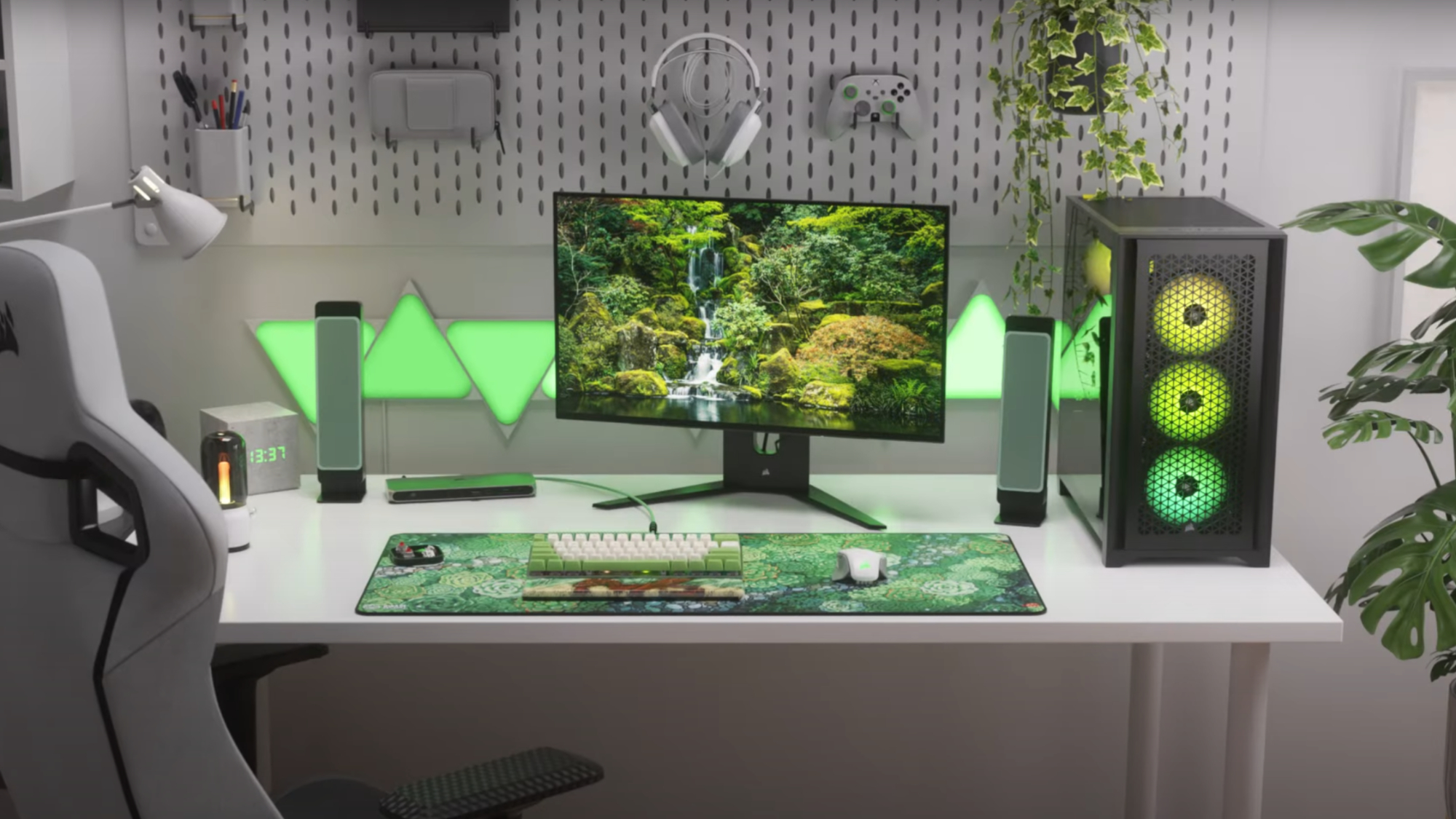This article first appeared in PC Gamer magazine issue 388 in September 2023, as part of our Tech Tales series. Every month we talk about the ups and downs of PC hardware, with a look back on our own history with the hobby.
There comes a time in everyone’s life when they look upon their gaming setup with fresh eyes. Usually that time comes when an outsider catches sight of your grinding dungeon. It’s a similar phenomenon to that of moving house, seeing intensely personal belongings being paraded around outside and saying to yourself, yep, definitely time for a new mattress.
For me, it was having a mate round my house and seeing my gaming room through his eyes. And what I saw was hardly the stuff of an Architectural Digest tour. Dead and dying house plants arranged on a second-hand Ikea desk I’d bought on eBay during lockdown when new furniture took seven to eight years to turn up. Tea rings on my mouse mat. Dust. Cables dangling everywhere. And worst of all: a mismatched array of peripherals. Roccat, Corsair, NZXT and Logitech with their contrasting styles and clashing RGB schemes, all sitting on one sad house plant graveyard. No no no. This wouldn’t do.
What should a PC gaming space actually look like in 2023, and more importantly what elements are actually important, beyond somewhere to put a mouse and keyboard? Are standing desks actually of benefit? What about ergonomic office chairs? How much light should I be getting and from where? For once, I had questions about my setup that my Instagram feed didn’t have all the answers to.
First: standing desks. The purported benefits are that standing burns more calories than sitting, that it promotes good back posture, and can boost mood, focus, and circulation. That sounds pretty great to me, so I research further into it and find some pretty substantial drawbacks.
Sitting with good posture is better than standing with poor posture.
One: standing desks are quite expensive, for some reason. It’s like the extra length of the legs has to be made from sheer saffron-plated gold, based on the MSRPs slapped on them. And sit-stand desks, which give you the option of both positions via a motorised adjustment to your desk height, are even pricier.
Two: well, they just don’t look very nice, do they? Speaking personally, curating a dedicated gaming space in my home is about making a cosy corner where I can relax and take a break from life’s duller demands. I don’t want anything productive to happen in this environment. It’s not going to double as my home office, so installing a totem of productivity like a standing desk in there runs contrary to the spirit of the space.
The legitimacy of those purported health benefits is also up for debate. Standing at a desk burns about 88 calories an hour, says Harvard Medical School. Sitting burns about 80. And yes, standing for extended periods can improve your posture—but only if you stand with good posture in the first place, which is a bit of a catch-22. Sitting with good posture is better than standing with poor posture, and if you’re not managing that, well, at least you’re sitting down.
Tables and chairs
(Image credit: Noblechairs)
I arrive at a traditional sitting desk with telescopic legs, generous dimensions so I can arrange some (living) house plants around my setup, and a polished concrete surface, just in case Architectural Digest ever does drop by.
There’s no cable management system bundled with this desk, but since this makeover is about aesthetics as much as function I consider it mandatory to hide my cables, so I buy a management ‘system’ from Amazon for £15.99 and install it on the underside of my desk. And it works just great.
The chair decision is a biggie. There are so many options to go down—gaming chairs. Office chairs. Ergonomic office chairs. Ergonomic office-gaming chairs. Having recently been down a standing desk research rabbit hole, I dig deep again on the science of ergonomic interventions to improve neck and back pain. Once again the science isn’t particularly robust—a recent, high-quality study of 1,000 teenagers published in the American Physical Therapy Association Journal found no link between posture and neck pain. Sleep quality, physical activity and stress levels have a much greater impact on your likelihood of neck pain than your typical seating posture, it’s now thought.
Gaming chairs are even worse. The design’s based around bucket seats in race cars, which were devised to keep you fixed in one place while lateral G-force is applied. No matter what that Amazon store listing is telling you about that RGB lumbar pillow, gaming chairs are no kind of solution to anything. And yes, I’ve seen the ones with cooling fans for your back. So go to an actual shop, sit in some chairs, and choose the one that feels the most comfortable.
Finishing touches: a deep clean of all my peripherals and components with compressed air and rubbing alcohol, and an RGB unification project—white pulse, since you ask—across my multi-manufacturer suite. New house plants. Job done. Sometimes you’ve got to ignore all the marketing and go for what actually works for you.











